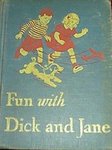Let's now explore the three bridges that span the 100
yard deep el Tajo gorge.
Puente Nuevo
 If you buy only one postcard here,
it will be of the new bridge, Puente Nuevo, In this case
"new" means 1793 when it completed after over 40 years of
construction. (It replaced a bridge designed by King
Philip V and built much quicker (eight months but el Tajo
gobbled it up --and about 50 people crossing on it --
after only 6 years. Did you want speed or
accuracy?)
If you buy only one postcard here,
it will be of the new bridge, Puente Nuevo, In this case
"new" means 1793 when it completed after over 40 years of
construction. (It replaced a bridge designed by King
Philip V and built much quicker (eight months but el Tajo
gobbled it up --and about 50 people crossing on it --
after only 6 years. Did you want speed or
accuracy?)
Note the bottom-most span that holds up
the main arch somewhat like a multi-tiered Roman aqueduct. In 1936,
near the start of Spain’s civil war, a mob threw
over 500 fascist sympathizers into this gorge. A young
war correspondent named Hemingway fictionalized it in
“For Whom the Bell Tolls.” It was a while
before he was Donne with Spain.
We look west in the pictures at left; the boxy
elegant structure peeking over the bridge is one of
Spain’s newest Paradors converted from the old town
hall. The new bridge rises 390 feet above the chocolate
river Guadalevín. The architect who completed the
bridge (and died a decade later -- contrary to a local
rumor that he jumped from the bridge during construction)
was José Martín de Aldehuela. He may be
best known for designing the mammoth cathedral in this
area's major city, Malaga. He used stone from the gorge
below (perhaps some of it from the prior collapsed bridge
as well.)
Infrastructure defines urban growth: The bridge dramatically changed
town life. Today its 200 square foot center room houses a museum about
itself and the area’s natural history and environment. During the
19th century, it was a prison and also housed political prisoners
during Spain’s 1930s uncivil war. (Bars on the windows were
probably not needed!). It takes 3 arches to span the gulch at the top
level; the bridge that fell was a single arch. As Einstein said, make
everything as simple as possible, but not simpler. The overall design
and bottom third of this 75 foot wide structure is the work of Domingo
Lois de Monteagudo. Work stalled in 1785 when the master José
Martin de Aldehuela (who had just finished the town’s bull ring)
was tasked with finishing up, along with a local engineer Antonio
Diáz Machuca who invented equipment to lift stones from the
gorge far below.

The Arab bridge

Two older bridges cross the Rio Guadalevín. The
older and further upstream is the single-arched Bridge of
San Miguel or the Arab Bridge (shown above). It’s
also called the Roman bridge for no apparent reason other
than there may have been a bridge here in Roman days
since this is the only part of the old town accessible
from the North. Many repairs have obscured much of the
Moorish construction. It leads to the old San Miguel
quarter, named after a hermitage across from the old Arab
baths
Puerto Viejo

Above is the Old (but not the oldest) Bridge –
called Puente Viejo. Nowadays it carries only
pedestrians. At the foundation of this 16th century
structure are remnants of a bridge built about the same
time. Could this have replaced another bridge that fell?
Here Puente Viejo links the old Moorish town with a small
market area called Padre Jesús that sprung up
after the Reconquista. The Old Bridge was restored
without much respect for history during the 1960s; Its
single arch formed by a double row of bricks and appears
to seamlessly integrate into the city walls here.
City walls

Speaking of city walls, let’s explore these 12th
century Walls of La Cijara which protect the eastern end
of the Moor’s town (Ciudad). Seen here is the inner
of the double wall fortifications. These were originally
adobe but upgraded to stone in the 14th century and
seriously restored in 1975.
Next we check out Ronda's Arab baths, the
best-conserved in all Iberia. Join us by clicking here.
|
Please join us in the following slide show to
give Ronda the viewing it deserves by clicking here.
|
|
|
|
Geek and Legal Stuff
Please allow JavaScript to enable word
definitions.
This page has been tested in Internet
Explorer 7.0 and Firefox 3.0.
Created on March 15, 2009
|
 |
TIP:
DoubleClick on any word to see its definition.
Warning: you may need to enable javascript or allow
blocked content (for this page only).
TIP:
Click on any picture to see it full size. PC
users, push F11 to see it even larger.
<


 If you buy only one postcard here,
it will be of the new bridge, Puente Nuevo, In this case
"new" means 1793 when it completed after over 40 years of
construction. (It replaced a bridge designed by King
Philip V and built much quicker (eight months but el Tajo
gobbled it up --and about 50 people crossing on it --
after only 6 years. Did you want speed or
accuracy?)
If you buy only one postcard here,
it will be of the new bridge, Puente Nuevo, In this case
"new" means 1793 when it completed after over 40 years of
construction. (It replaced a bridge designed by King
Philip V and built much quicker (eight months but el Tajo
gobbled it up --and about 50 people crossing on it --
after only 6 years. Did you want speed or
accuracy?)



